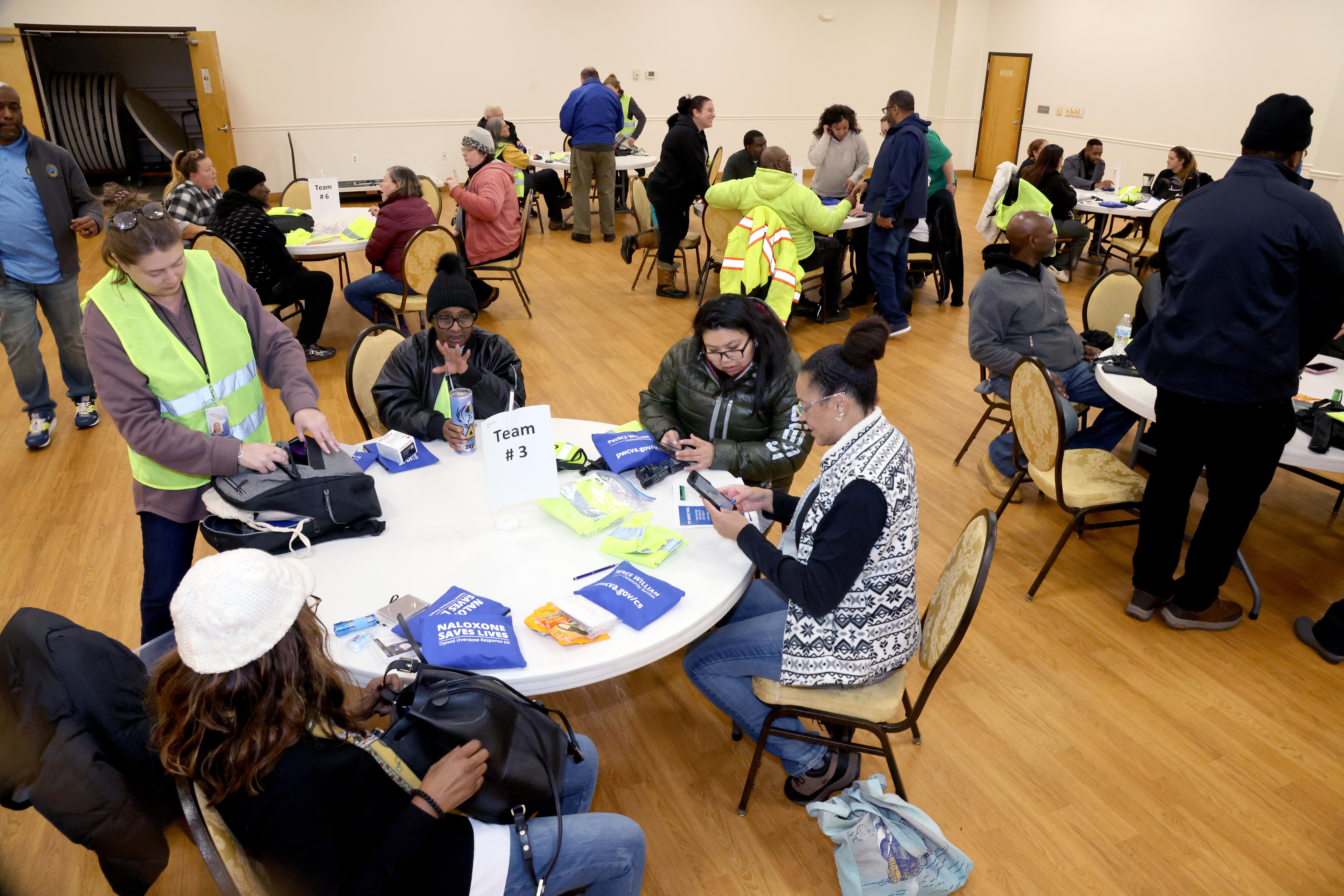Point in Time Count Survey Helps Identify the Needs of Area Homeless

Every year, within the last 10 days of January, the Prince William County Department of Social Services’ Homeless Services Division, the lead agency for the Prince William Area Continuum of Care for Homeless Services (CoC), brings volunteers from county government, faith-based organizations, and non-profits together to conduct the Point in Time survey to determine the number of homeless in the area on that specific day.
This year, volunteers visited encampments across the county and the cities of Manassas and Manassas Park, during a 24-hour period from Jan. 24 to Jan. 25. The survey looks at how many people are living in area shelters and permanent supportive housing along with people living outside of shelters in places not meant for human habitation.
The U.S Department of Housing and Urban Development requires jurisdictions across the country that receive federal funding to conduct point in time surveys, which provide a quick look at what is going on in an area’s homeless population. Aside from helping to determine the number of those experiencing homelessness, the survey results will determine the amount of federal funding that will come to the community. The survey also helps identify service gaps and raises public awareness about homelessness.
Hilda Barg Homeless Prevention Shelter Human Services Manager Priscilla Castillo-Woyak, a team leader for this year’s count, said she volunteers because she knows the importance of the task.
“I already work with the population on the family side of things. I love this work. I think we get to know the community better. For me, it’s just important to be here for support,” Castillo-Woyak said.
Prince William County Assistant Director of Homeless Services Tony Turnage said, “Knowing how many homeless people live in the community helps the CoC decide where to focus its efforts in combating homelessness.”
“It gives us, as a community, a sense of how many persons experiencing homelessness we have that are unsheltered. We also count the shelters’ residents. It gives us a sense of what might be some of the challenges for some of those individuals. The key here is how do we use existing resources, do we need additional resources? That allows us to identify funding that we might want to go after. It helps us say, ‘Hey, here’s how we can make a dent in ending homelessness,’” Turnage said.
Northern Virginia Community College student Ryanne Tasker volunteered to help feed those being counted from one of several food trucks that went out across the county.
“If you have extra time, you might as well help people who need it. I have more to give than I need to take,” the 21-year-old Tasker said.
County Executive Christopher Shorter visited the volunteers who gathered at Buckhall Volunteer Fire Department as they prepared to fan out across the area looking for people experiencing homelessness and thanked them for their efforts.
“Thank you for being here, for volunteering your time and opening your hearts,” Shorter said. “It means so much to me to live in a community where so many residents are willing to raise their hands and say, ‘I will support my neighbors experiencing homelessness,’” Shorter said.
The Washington Metropolitan Council of Governments will analyze the data the surveys produce in January and February and release the compiled data results in May.